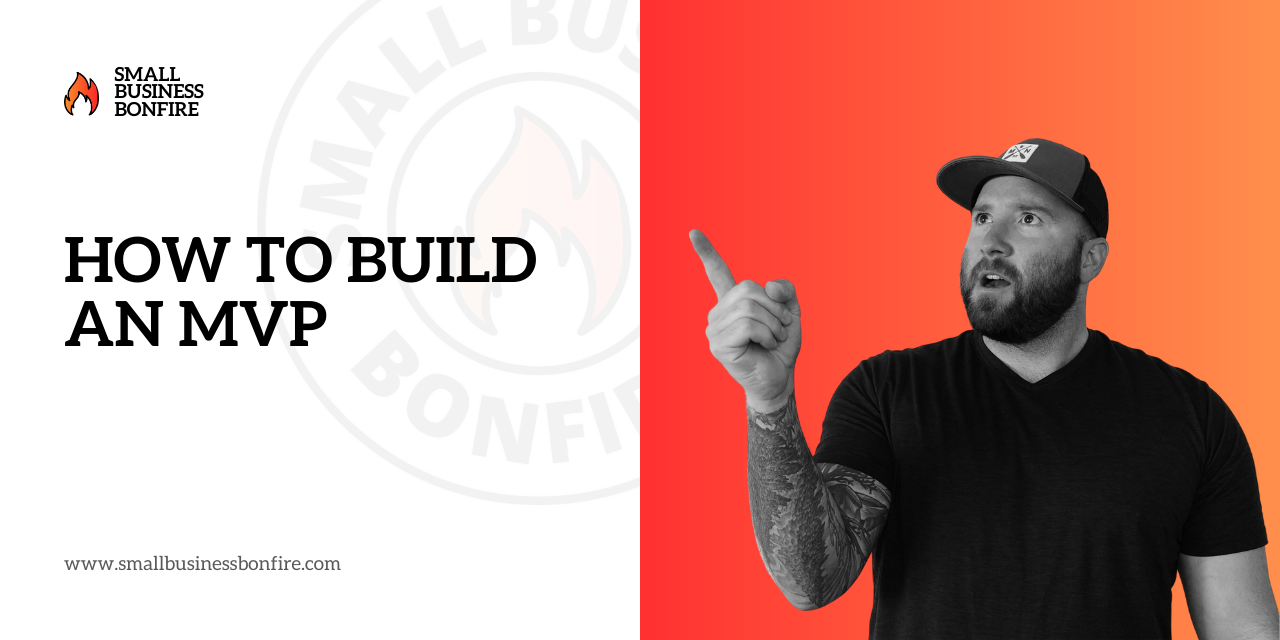Minimum viable product development can be a fun and rewarding experience – but it can also be overwhelming.
I’ve got you covered! Here’s a list of MVP development tips to keep you on track and avoid pitfalls.
Tip 1: MVPs Focus on UVPs, NOT Features
During MVP development, it is crucial to prioritize your product’s unique value proposition (UVP).
Your UVP distinguishes your product from competitors and captures the interest of potential customers.
Instead of solely emphasizing features, devote your efforts to crafting a product that presents an innovative and effective solution to a specific customer problem.
Doing so can create a strong foundation for long-term success and customer satisfaction.
It’s easy to get sidetracked by adding too many features to the product, so try to focus on what matters most.
Tip 2: Don’t Blow Your Budget
Creating an MVP can drain your wallet if you don’t plan ahead.
Be strategic with your budget and determine the most cost-effective way to build your product. This will help you stay within budget and keep the project on track.
You can save time and money by doing the following:
- Scout out potential vendors
- Compare prices
- Hunt for discounts or deals, and
- Take advantage of free resources.
And remember, be realistic when setting your budget – don’t underestimate the costs of development or overestimate what you can accomplish with limited resources.
It’s all about being savvy, my friend!
Tip 3: Don’t Move forward from an MVP too Quickly
When your MVP is ready, it’s tempting to move full steam ahead with product development and launch as soon as possible.
Avoid this mistake! An MVP should be tested thoroughly before taking the next step.
You want to ensure that the features you have included successfully solve the customer’s problems and make their lives easier.
Before you move forward with an MVP, you want to do the following:
- Validate your assumptions
- Collect as much customer feedback as possible
- Analyze user feedback and make necessary adjustments
MVPs are a great way to test ideas without breaking your budget – use this opportunity wisely!
Tip 4: Ensure You’re Targeting the Right Customers
Remember to keep your target customers in mind during the MVP development process.
Check that you are targeting the right market and make sure your product is providing a solution for their specific needs.
Remember, an MVP should be tailored to the customer’s preferences. Make sure you understand who they are and how your product can help them.
If your product isn’t relevant to their needs, you won’t be able to maximize its potential.
Keep it customer-focused, and you’ll be on the right track!
Tip 5: Get Enough Customer Feedback
A successful MVP development process requires thorough customer feedback.
Make sure to use a variety of feedback-gathering tactics and collect as much data as possible from target customers. This can be done through:
- Surveys
- Interviews
- Focus groups
- Beta tests
By choosing the best methods for your MVP product development, you will be able to understand the needs of your target customers and create a better product.
Good customer feedback is essential for creating an effective MVP – don’t skip this step!
Tip 6: Analyze the Competition
When creating an MVP, analyzing the competition is critical. Figuring out who your competition is and what they offer will help you determine the best features to include in your MVP.
To identify improvement areas or innovation opportunities, follow these steps
- Step 1: Check out what similar products are doing
- Step 2: Look at customer reviews and feedback to gain insight into their needs and preferences
- Step 3: Keep an eye on any new products entering the market
- Step 4: Create a product that offers more value than competing products
By analyzing the competition, you can develop an MVP that stands out and provides a unique solution to customer problems.
Analyzing your competitors can open up new opportunities – take advantage of it!
Tip 7: Make Sure to Test the MVP
Once you have created your MVP, it’s essential to test it thoroughly.
Testing is important to discover potential issues or bugs and ensure all features work as planned.
You can use various testing methods, such as usability testing, user experience testing, or A/B testing.
Testing also allows you to collect customer feedback and make improvements before launching the product.
Be sure to take the time to test your MVP – you don’t want any unpleasant surprises!
